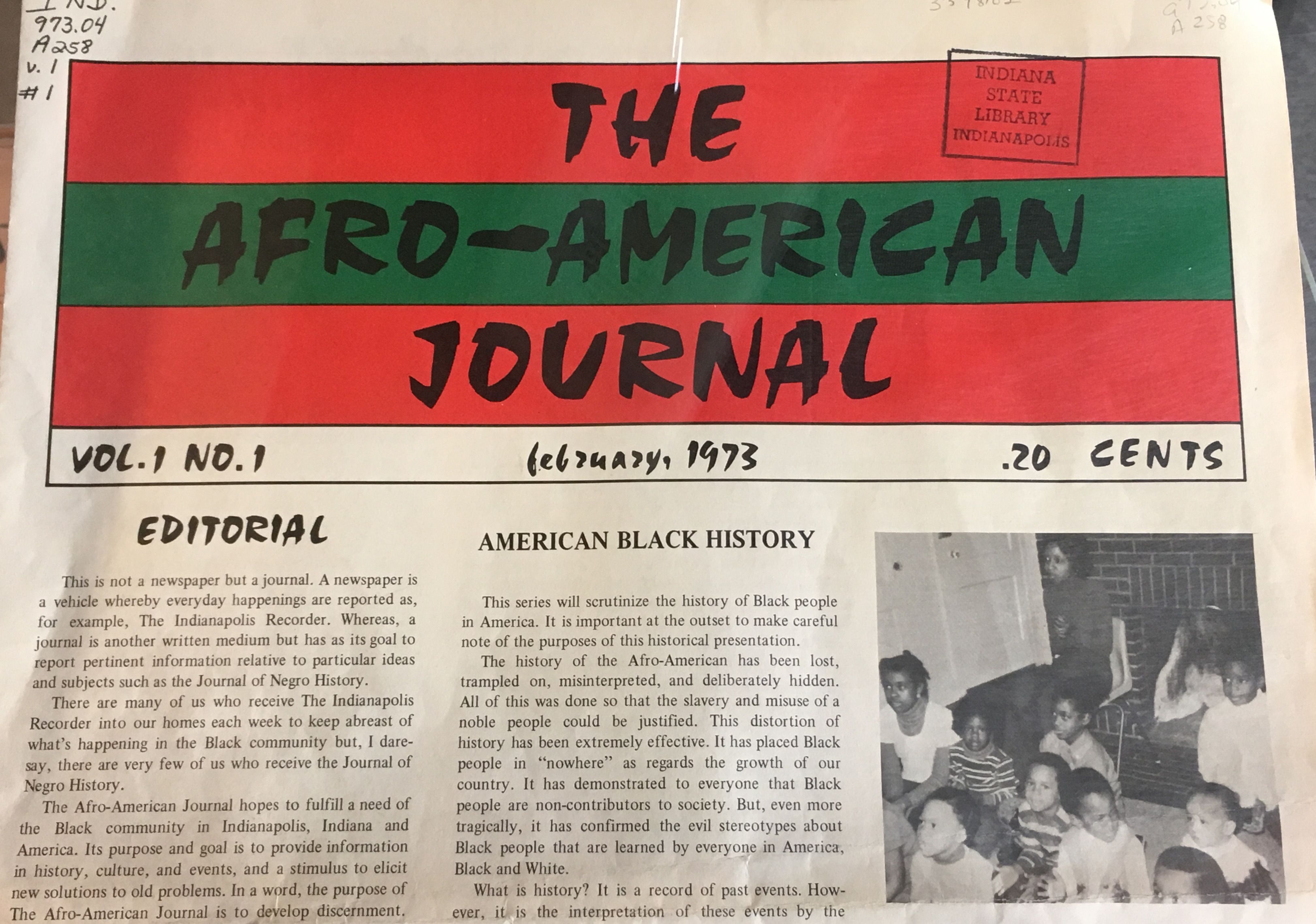Juneteenth, which takes place on June 19 annually, celebrates the implementation of the Emancipation Proclamation across the United States. While all enslaved people in the Confederate States were declared to be legally free on January 1, 1863, in practice many slaves in western states were not free until years later. On June 19, 1865, enslaved African Americans in Texas were finally made free by executive decree. Juneteenth has been celebrated for over 150 years.
Celebrate this Juneteenth by reading the Emancipation Proclamation available through the National Archives or by learning more about this holiday through the National Museum of African American History. Honor African Americans by reading books by African American authors.
The Indiana Young Readers Center has put together this list of books, new and old, so that people of all ages can engage with rich stories for everyone told by African Americans with Indiana connections.
“I See the Rhythm” text by Toyomi Igus, with paintings by Michele Wood
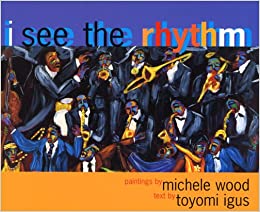 Winner of the 1999 Coretta Scott King Award for outstanding African American authors and illustrators of books for children and young adults that demonstrate an appreciation of African American culture and universal human values, this primer of history is told through the amazing art of Hoosier Michele Wood and the exuberant verse of Toyomi Igus. Read this book to experience the rhythm of African American history.
Winner of the 1999 Coretta Scott King Award for outstanding African American authors and illustrators of books for children and young adults that demonstrate an appreciation of African American culture and universal human values, this primer of history is told through the amazing art of Hoosier Michele Wood and the exuberant verse of Toyomi Igus. Read this book to experience the rhythm of African American history.
“The Music in Derrick’s Heart” by Gwendolyn Battle-Lavert, illustrated by Colin Bootman
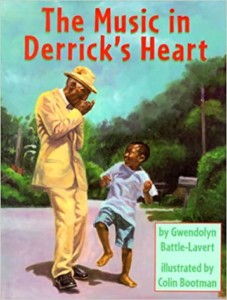 Looking for a picture book? This is a sweet story about Derrick who is aching to learn how to play the harmonica from his uncle, Booker T. Children will love hearing about Derrick’s passion and how he tapes his harmonica to his head and his heart when he sleeps. Dr. Gwendolyn Battle-Lavert is from Marion, Indiana and is the author of several children’s picture books including “Papa’s Mark,” “The Shaking Bag” and “Off to School.”
Looking for a picture book? This is a sweet story about Derrick who is aching to learn how to play the harmonica from his uncle, Booker T. Children will love hearing about Derrick’s passion and how he tapes his harmonica to his head and his heart when he sleeps. Dr. Gwendolyn Battle-Lavert is from Marion, Indiana and is the author of several children’s picture books including “Papa’s Mark,” “The Shaking Bag” and “Off to School.”
“Singing Black: Alternative Nursery Rhymes for Children” by Mari Evans, illustrated by Ramon Price
 Nursery rhymes, with their simple words and sing-song rhythms have enthralled and excited youngsters for centuries. But most of the best-known rhymes reflect a limited Western perspective. “Singing Black” is a charming collection of original short poems by award-winning poet and writer Mari Evans that draw their inspiration from black culture. Evans made her home in Indianapolis for nearly 70 years.
Nursery rhymes, with their simple words and sing-song rhythms have enthralled and excited youngsters for centuries. But most of the best-known rhymes reflect a limited Western perspective. “Singing Black” is a charming collection of original short poems by award-winning poet and writer Mari Evans that draw their inspiration from black culture. Evans made her home in Indianapolis for nearly 70 years.
“The Usual Suspects” by Maurice Broaddus
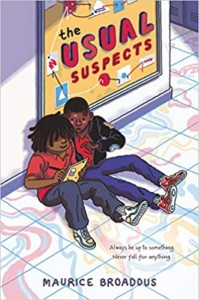 If you are in the mood for a good middle-grade mystery, look no further. Thelonius Mitchell is tired of being labeled. He’s in a special education class, separated from the “normal” kids at school who don’t have any “issues.” When a gun is found at a neighborhood hangout, the school administrators start their inquiries right in Thelonius’s class. Thelonius feels the injustice deeply and sets to work right away to solve the mystery. Maurice Broaddus lives and works in Indianapolis and is the author of several books for grown-ups as well as children.
If you are in the mood for a good middle-grade mystery, look no further. Thelonius Mitchell is tired of being labeled. He’s in a special education class, separated from the “normal” kids at school who don’t have any “issues.” When a gun is found at a neighborhood hangout, the school administrators start their inquiries right in Thelonius’s class. Thelonius feels the injustice deeply and sets to work right away to solve the mystery. Maurice Broaddus lives and works in Indianapolis and is the author of several books for grown-ups as well as children.
“Tyler Johnson Was Here” by Jay Coles
 A stunning young adult novel about police brutality in modern American. When Marvin Johnson’s twin brother Tyler goes to a party, Marvin decides to tag along to keep an eye on him. But what starts out as harmless fun turns into a shooting, followed by a police raid. The next day, Tyler is missing and Marvin wants nothing more than to find his brother alive and safe. The chilling truth is that Tyler is dead; shot and killed by a police officer. Author Jay Coles wrote this book based on true personal events. Jay Coles lives in Indianapolis and is also a teacher and musician.
A stunning young adult novel about police brutality in modern American. When Marvin Johnson’s twin brother Tyler goes to a party, Marvin decides to tag along to keep an eye on him. But what starts out as harmless fun turns into a shooting, followed by a police raid. The next day, Tyler is missing and Marvin wants nothing more than to find his brother alive and safe. The chilling truth is that Tyler is dead; shot and killed by a police officer. Author Jay Coles wrote this book based on true personal events. Jay Coles lives in Indianapolis and is also a teacher and musician.
“The Season of Styx Malone” by Kekla Magoon
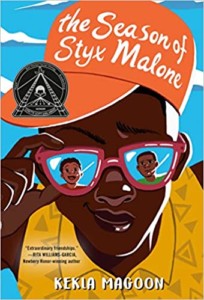 Looking for a summer friendship story? Meet Caleb and his brother Bobby. They are excited for a whole summer of exploring the woods when they meet newcomer, Styx Malone. Oozing cool from every pore, Styx convinces the two brothers to help him pull off the Great Escalator Trade – exchanging one small thing for something better until they achieve their final goal. But, as one thing leads to another, the boys seem to know less and less about their new friend. Award-winning author Kekla Magoon grew up in Indiana and is the author of many books for young people including “How It Went Down,” “Shadows of Sherwood,” “X: A Novel” and “The Rock and the River.”
Looking for a summer friendship story? Meet Caleb and his brother Bobby. They are excited for a whole summer of exploring the woods when they meet newcomer, Styx Malone. Oozing cool from every pore, Styx convinces the two brothers to help him pull off the Great Escalator Trade – exchanging one small thing for something better until they achieve their final goal. But, as one thing leads to another, the boys seem to know less and less about their new friend. Award-winning author Kekla Magoon grew up in Indiana and is the author of many books for young people including “How It Went Down,” “Shadows of Sherwood,” “X: A Novel” and “The Rock and the River.”
“You Should See Me in a Crown” by Leah Johnson
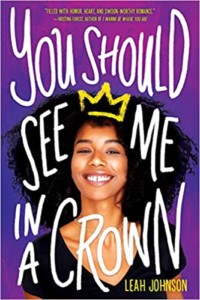 Liz Lighty has always believed that she’s too black, too poor and too awkward to shine in her small, rich, prom-obsessed Midwestern town. But it’s okay – she has a plan that will get her out of Campbell, Indiana, forever – one that revolves around financial aid that unexpectedly falls through. Liz is devastated until she remembers that her school offers a scholarship for the prom king and queen. This brand new book by debut author Leah Johnson is a number one new release on Amazon. Though Johnson currently lives in Brooklyn, New York she was born and raised in Indianapolis and is a tried and true lifelong Hoosier.
Liz Lighty has always believed that she’s too black, too poor and too awkward to shine in her small, rich, prom-obsessed Midwestern town. But it’s okay – she has a plan that will get her out of Campbell, Indiana, forever – one that revolves around financial aid that unexpectedly falls through. Liz is devastated until she remembers that her school offers a scholarship for the prom king and queen. This brand new book by debut author Leah Johnson is a number one new release on Amazon. Though Johnson currently lives in Brooklyn, New York she was born and raised in Indianapolis and is a tried and true lifelong Hoosier.
This blog post was submitted by Indiana Young Readers Center Librarian Suzanne Walker.




